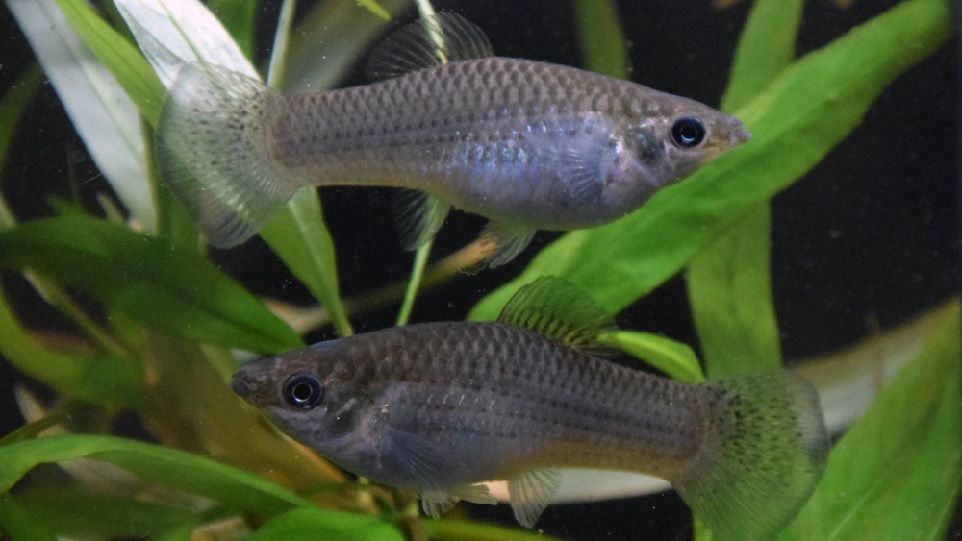
Clonal fish may spawn differently

Fish with identical genetic material that are reared under highly standardised environments systematically differ in the number and size of offspring per reproduction cycle, two crucial indicators of biological fitness.
11/30/2023 · News · Leibniz-Institut für Gewässerökologie und Binnenfischerei · Umweltwissenschaften · Forschungsergebnis
According to current knowledge, individuality is determined by either difference in genome or in the apparent environmental conditions. However, studies show, the paradigm of twin-research is currently crumbling. A research team from IGB and the Cluster of Excellence "Science of Intelligence" (SCIoI) has now found that clonal fish – i.e. fish with identical genetic material – that are reared under nearly identical, highly standardised environments systematically differ in the number and size of offspring per reproduction cycle, two crucial indicators of biological fitness. The study is published in the journal Nature Communications.
The researchers studied the behaviour and reproductive profiles of 34 Amazon mollies (Poecilia formosa) over a period of 280 days. These fish naturally reproduce clonally, and all offspring is therefore genetically identical to the mother, with the species only consisting of females, and reproduction (i.e. cloning of the mother) occurring through activation through sperm of males from similar species. The fish are born alive and there is no brood care after birth. They can therefore be kept under identical, highly standardised conditions from day one.
With the help of an automated high-resolution video tracking system, the researchers recorded activity and food intake during the first month of life. They then characterised the reproductive profile of each individual, i.e. reproductive onset, brood size and offspring size. These are indicators of life history productivity and, ultimately, biological fitness. The team studied 2522 offspring from 152 broods.
Individual differences in activity and food intake
As shown in a previous study, the individual fish differed systematically in their activity patterns and food intake. "Our experiment confirms that behavioural individuality develops at a very early stage even without genetic and obvious environmental variation ", said Max Wolf, leader of the study and researcher at IGB and in the Cluster of Excellence SCIoI.
Individual differences in reproductive profiles and productivity
The researchers studied an average of four broods per individual and found that individuals consistently differed in how large their offspring were and how many offspring they produced per brood. In other words, individuals differed in how productive they were.
"This is the first evidence that genetically identical animals growing up under near-identical environmental conditions differ quite substantially in their biological fitness," said Ulrike Scherer, lead author of the study and researcher in the Cluster of Excellence SCIoI and guest scientist at IGB. And there‘s a reason for that: It was found that the fish that spent more time feeding grew larger, and larger fish produced larger offspring, though those fish started reproducing later. However, food intake seemed to have no effect on brood size, and there was no correlation between individual activity levels and reproduction.
"Our study also reveals, how little we understand so far about the emergence of individuality and the possible role of epigenetics, stochasticity and micro-environmental differences," said Ulrike Scherer.
Further information and contact
Press release – Leibniz Institute of Freshwater Ecology and Inland Fisheries (IGB)